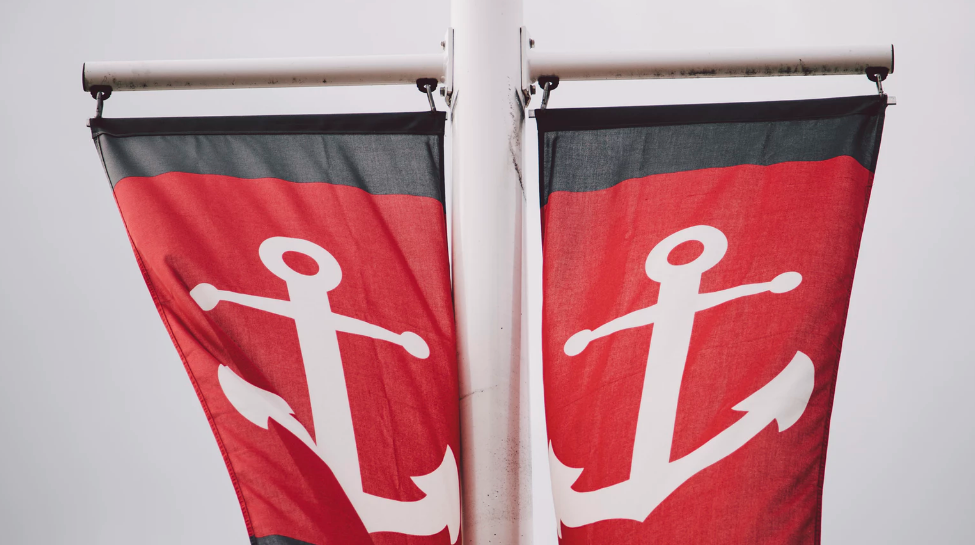With June already upon us, we know summer is certain to follow quickly. But before we mark the official start of the warm and sunny season, we pass another notable date.
In the United States, June 14th is National Flag Day. So we thought it would be appropriate to reflect on flags—items that may be inanimate but certainly, aren’t silent.
Flags for war
Travel back along the timeline of flag history and we find an early use for flags that makes sense—war. Upon reflection, we can see why flags would have been involved in early conflict. Flags are uniquely suited to be seen. If we envision the chaos of fighting, we understand how a flag could be useful and necessary. It could enable certain locations or people to be seen by others working with them.
Flags for water
The ocean provided another use for flags, and we stop here next on our history timeline. Imagine you were sailing the high seas without the benefit of modern technology. Obviously, the expanse of foaming waves would present a hurdle for communicating with the crew and passengers of other ships.

And yelling across the waves to establish one’s identity would certainly be off the table. However, flags offer non-verbal communication assistance. They require no spoken words to provide a message that others can then receive. Sometimes, viewers received a distinctively unpleasant message (as in the case of the ghastly skull and crossbones flag). Yet they did indeed receive a message.
Digging deeper from our bird’s eye view of flags, let’s talk a little about our own flag. Yes, the Old Glory immortalized in Francis Scott Key’s famous song—the song that is our national anthem.
The United States of America’s own flag
In popular American history, the first American flag was sewn by Betsy Ross. However, it seems this may not be definite historical “fact” after all. Actually, we may never know for certain whose workmanship produced this initial American icon.
Perhaps the first flag didn’t come from the fingertips of Betsy Ross. Instead, maybe it was some other accomplished seamstress in the newly united colonies. But whoever it was, America owes them a debt of gratitude.
Of course, what we do know about that first flag is that it was comprised of red, white, and blue. Certainly, this is one element of our flag that has remained constant. However, more white stars had to be added to the blue field as more states were added to the union.
Flags to mark territory & more
Now, fast forward to more recent American history and think about the symbolism involved in certain iconic placings of American flags. For one, there’s the flag raising on Mount Suribachi. Then, there are the American flags that have taken up residence on the moon. Additionally, American flags on Earth have reached as far as the South Pole.
American flags flown by private citizens around the country often function as symbols of patriotic feeling. Thus, perhaps we could say they serve as fabric statements of support. In addition, the way in which a flag is hung also sends a message. Flying a flag upside down is a distress signal. And, flown at half-mast, the American flag signals collective mourning.
Flag Day
By the standards of general flag history, the United State’s Flag Day is a relatively new celebration. Observing June 14th as Flag Day was instituted in 1949, so it’s a young holiday. For instance, compare it to our Independence Day celebration. Arguably, we’ve been celebrating that momentous occasion for years numbering in the hundreds.

Interestingly, flags are not limited to their official capacities as standards of nations or military units. In fact, if you look around, you’ll see flags all over that may not be official symbols but still speak about the preferences and alliances of their owners. For instance, perhaps your neighbor flies a flag for their favorite sports team. Or a local company may raise a flag with the company logo to catch the breeze. Plus, some homeowners like to celebrate the transition from one season to the next with seasonal flags.
Flags & businesses
While businesses often choose to fly their nation’s flag outside their buildings, they’re not the only business-related flags. In fact, when you’re looking to send a message tailored to your business, feather flags could be the answer. Plus, of course, businesses have plenty of signage options other than flags. And you can check out our guide to sign types to get a feel for some of them. Before you start designing yours, check out our 6 Elements You Must Include On Your Sign | Tips On Layout & Design.




